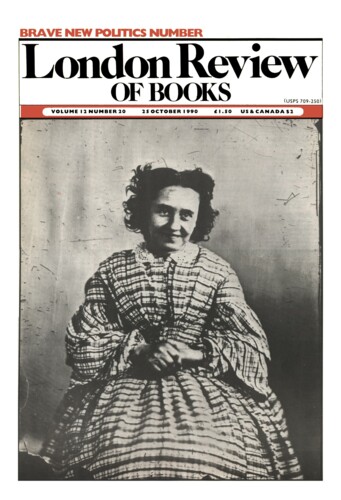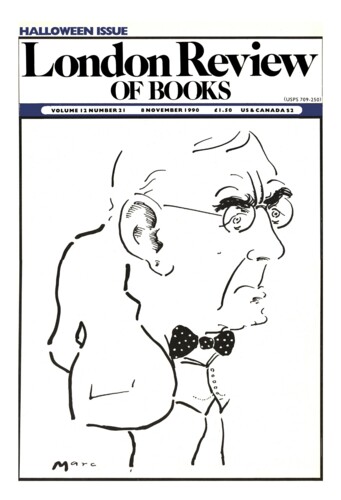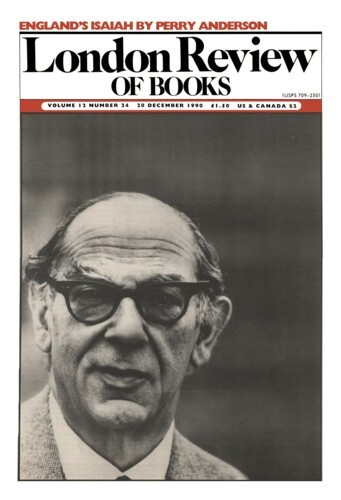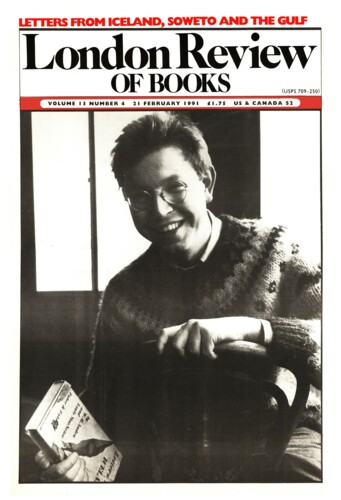Paul and Penny
Julian Symons, 25 October 1990
One day in 1950 I walked down Crown Passage, an alley between King Street and Pall Mall, to call on the Falcon Press in pursuit of money they owed me. The managing director Peter Baker had left letters unanswered and telephone calls unreturned, and sure enough he was out. I saw instead a harassed long-nosed man in a blue suit who said his name was Paul Scott, and that he was the company secretary. Things were in a bit of a muddle, but he would see what could be done. I can’t remember whether I ever got my money, but Scott had good reason to look harassed, ‘with the accounts in front of him and creditors on the telephone’, as one of his friends put it. He wisely left Falcon Press before its collapse and the trial of Peter Baker – Captain Peter Baker, MC, the youngest Tory MP in the 1950 Parliament – for fraud and forgery, at the end of which he received a seven-year prison sentence.’





